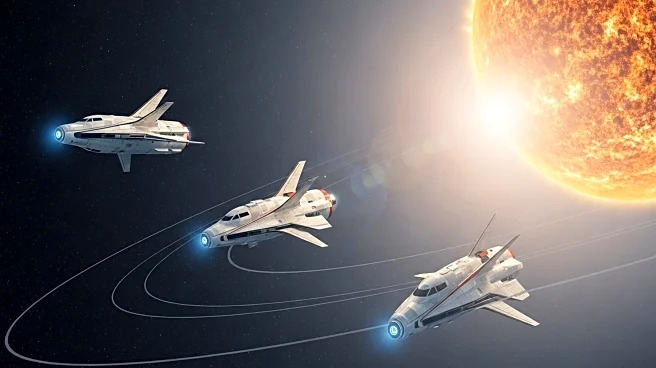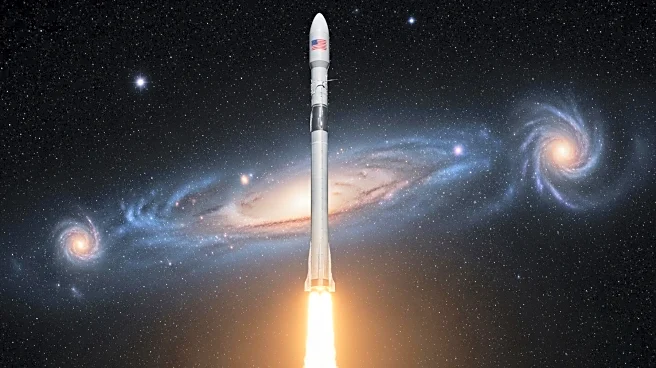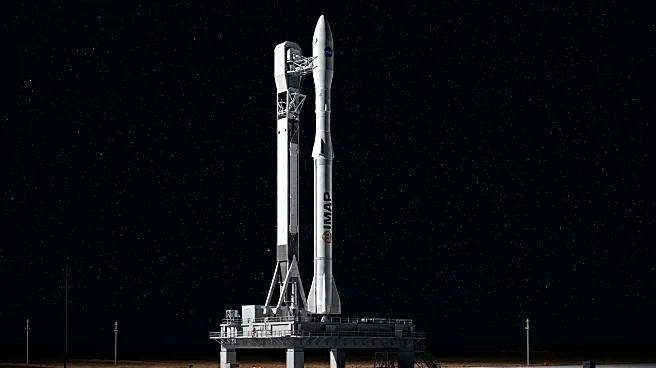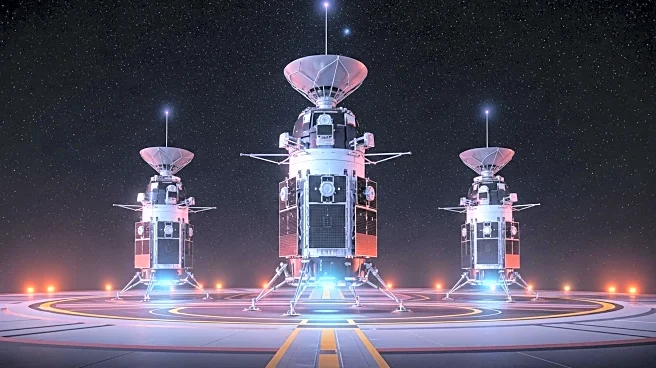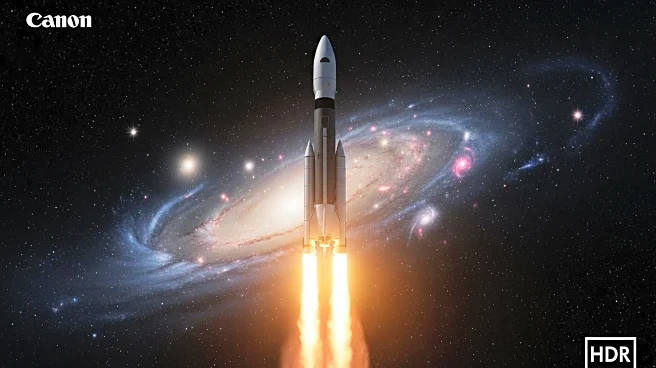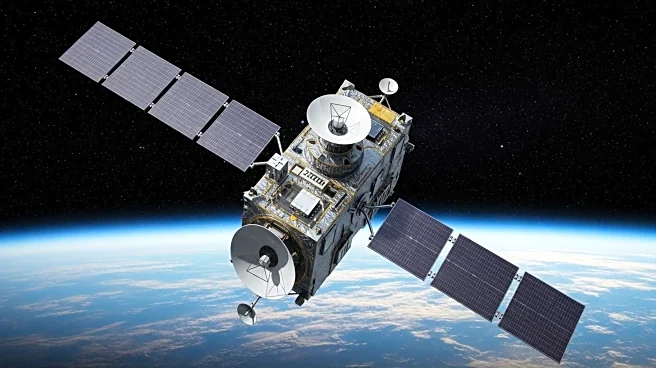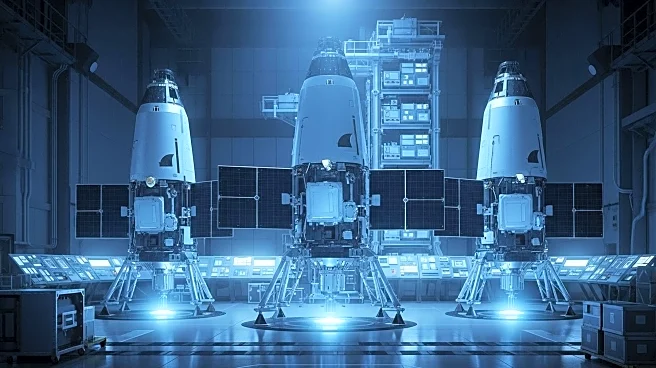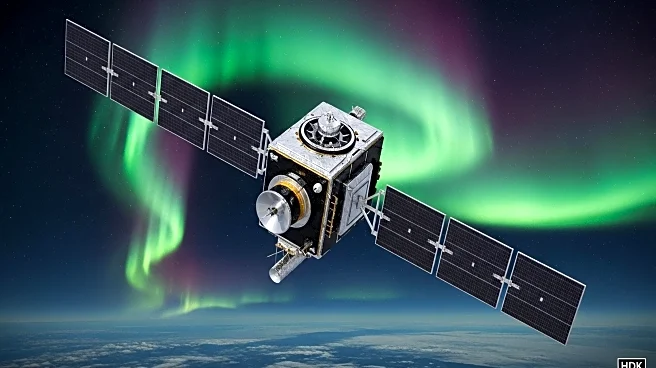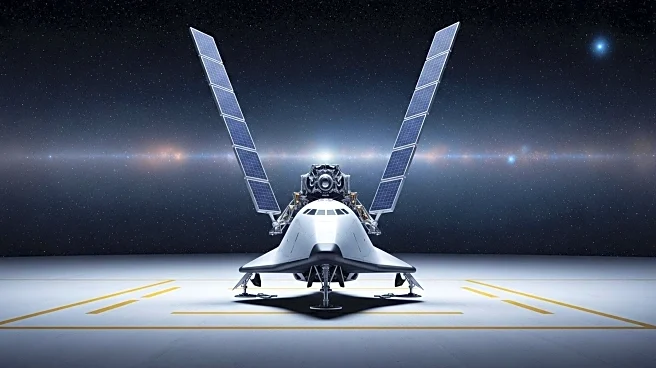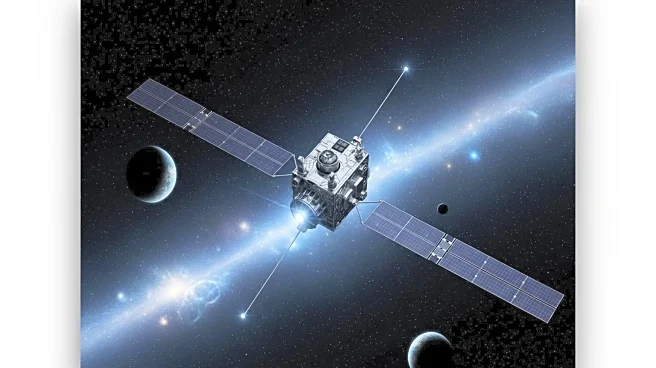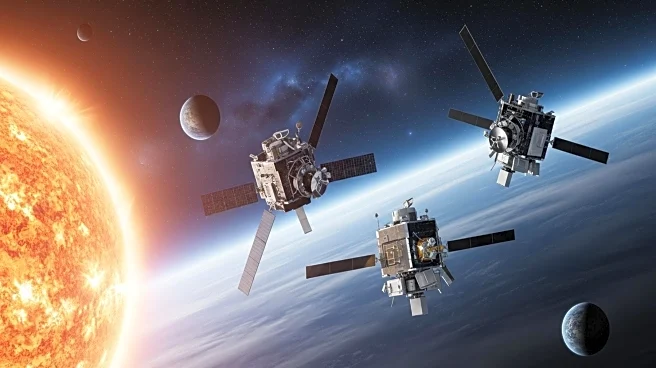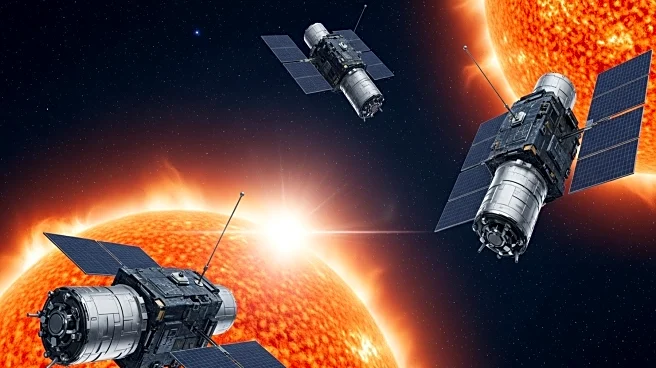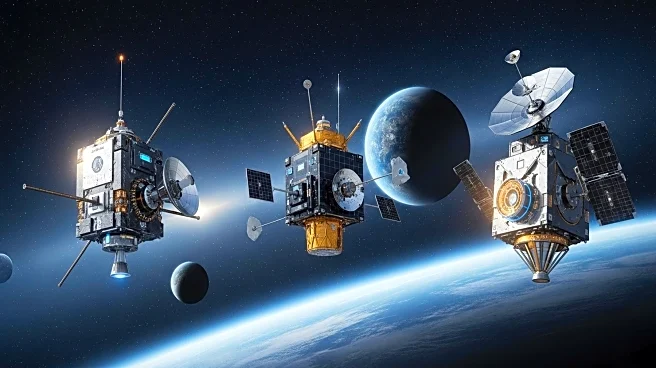What is the story about?
What's Happening?
On September 24, 2025, SpaceX successfully launched three spacecraft aboard a Falcon 9 rocket from NASA's Kennedy Space Center in Florida. The missions include NASA's Interstellar Mapping and Acceleration Probe (IMAP), the Carruthers Geocorona Observatory, and NOAA's Space Weather Follow On-Lagrange 1 (SWFO-L1) satellite. These spacecraft aim to study the solar wind and its effects on Earth and interstellar space. The launch marks a significant step in understanding space weather and its potential impacts on technology and human activities.
Why It's Important?
The launch of these missions is crucial for advancing the understanding of space weather, which can have significant impacts on satellites, power grids, and communication systems. By providing real-time data on solar activity, these missions will help predict and mitigate the effects of solar storms, thereby protecting vital infrastructure and ensuring the safety of astronauts. The insights gained from these missions will also support future interplanetary missions, including those to the Moon and Mars, by enhancing space weather readiness.
What's Next?
The spacecraft will travel to the L1 Lagrange point, a location between Earth and the Sun, where they will begin their observations. The data collected will be used to improve space weather forecasts and develop strategies to protect technology and human activities from solar storms. The missions are expected to provide valuable information that will contribute to the safety and resilience of global infrastructure.
Beyond the Headlines
These missions highlight the collaboration between NASA and NOAA in addressing space weather challenges. The successful launch demonstrates the effectiveness of using shared resources to maximize scientific output and cost efficiency. The data collected will not only benefit the United States but also contribute to global efforts in understanding and mitigating space weather impacts.
AI Generated Content
Do you find this article useful?
